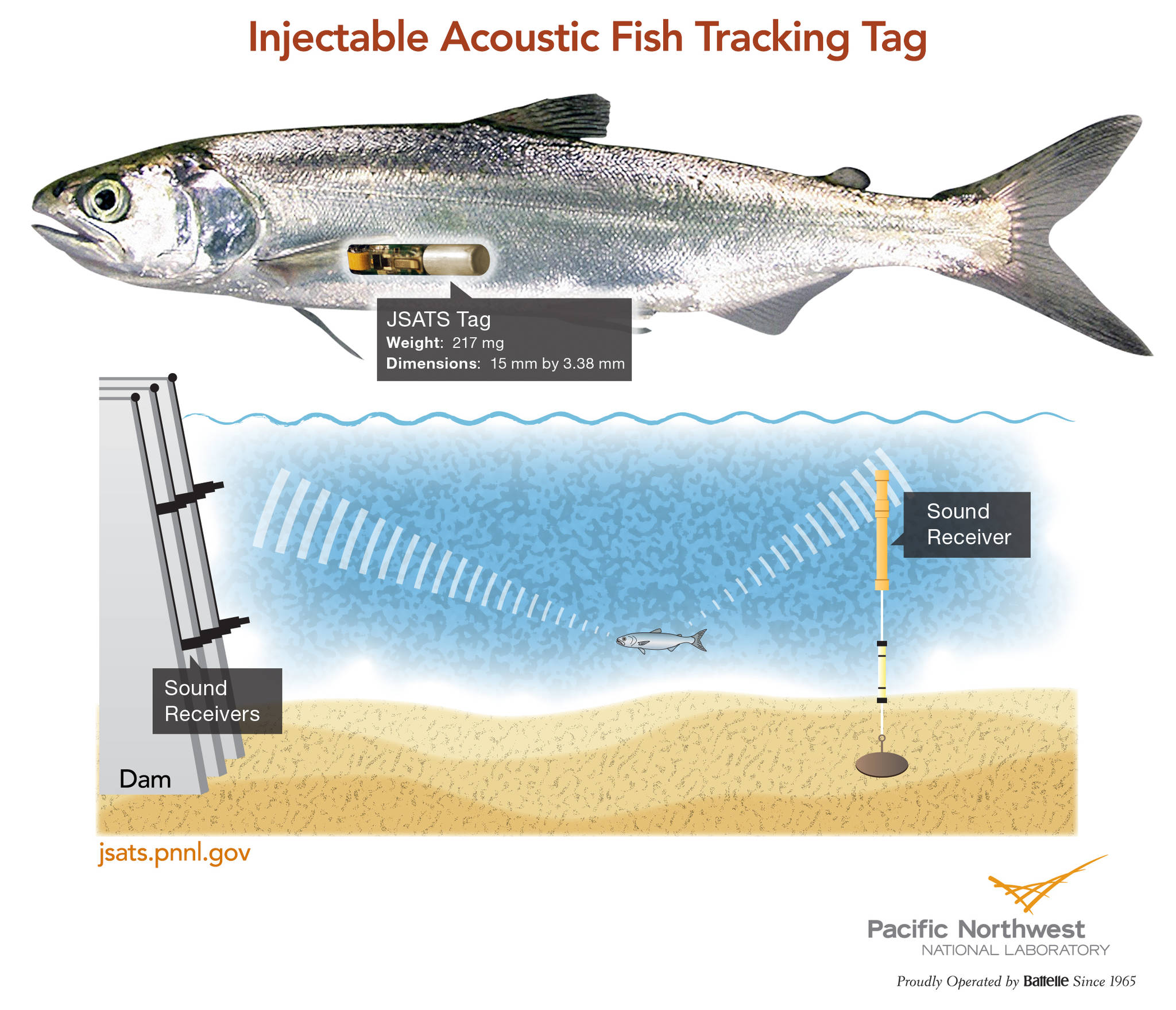A new five-year agreement between Pacific Northwest National Laboratory and the University of Alaska Fairbanks makes Sequim’s Marine Sciences Laboratory a key part of upcoming research for aquatic animals’ safety around turbines.
The partnership brings the entities together for multiple efforts including underwater technology development, hydropower generation, and marine renewable energy.
PNNL officials report their scientists, who work and help operate the Sequim lab, and the UAF’s Alaska Center for Energy and Power’s staff and students, will work together on research, grant requests/funding, and college faculty and graduate research appointments.
Dr. Genevra Harker-Klimes, technical group manager, Coastal Research Group in Sequim, said they plan to monitor fish they tag near the seabed and their general behavior related to how they use the flow at different states of the tide.
She said the University of Washington, another long-time partner of the Sequim lab, plans to bring in an underwater turbine, about 1-meter by 1-meter, to study how fish react around it.
“It’s about how to protect the fish and if we put something in the water, how do fish react to it,” she said.
Her team will look for behavioral changes and whether or not the fish stay around or avoid the turbine.
Harker-Klimes’ plan is to monitor currents and animals in the channel for 4-plus months later this year with the University of Washington using sonar, acoustic cameras and video cameras.
The National Laboratory helps manage an arctic observatory on the North Slope of Alaska as part of DOE’s Atmospheric Radiation Measurement Climate Research Facility, ACEP, which conducts research on river and ocean energy generation and integration at the Tanana River Test Site near Nenana, Alaska.
As part of the new agreement between PNNL and the university, one of the ACEP team members will come to Sequim.
“We hope to refine their techniques and share knowledge and manpower for doing those techniques,” Harker-Klimes said.
“We hope it will lead to joint appointments for the Alaska site or Sequim.”
PNNL director Steven Ashby said PNNL is proud to partner with the University of Alaska Fairbanks.
“We will leverage unique capabilities across the two institutions, including PNNL’s Marine Sciences Laboratory in Sequim, and help build our future workforce by providing rich research opportunities for graduate students,” he said.
PNNL officials report future partner projects with the University of Alaska Fairbanks may include the use of unmanned aerial systems for oil spill and ecosystem restoration monitoring, improving energy efficiency in maritime infrastructure, and more.
Harker-Klimes said she sees the new partnership really as a three-way agreement with the University of Fairbanks, PNNL, and the Pacific Marine Energy Center, that coordinates research, development, education and testing for marine energy. Partnering universities include Oregon State University, University of Washington and the University of Alaska Fairbanks. For more on the Pacific Marine Energy Center, visit nnmrec.oregonstate.edu. For more on PNNL, visit www.pnnl.gov/news.



